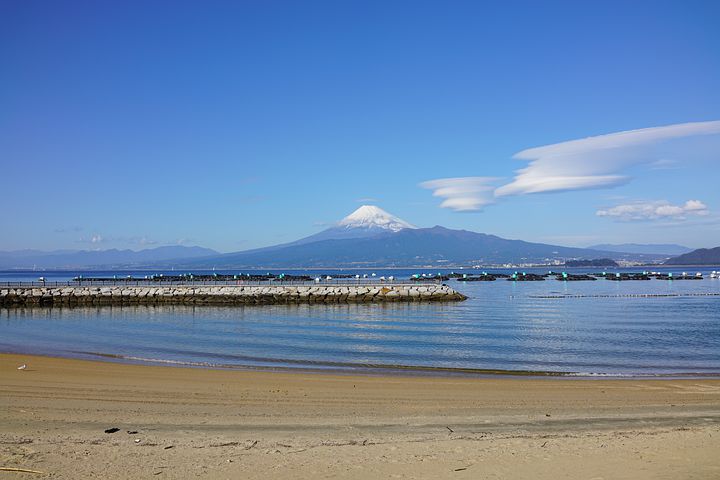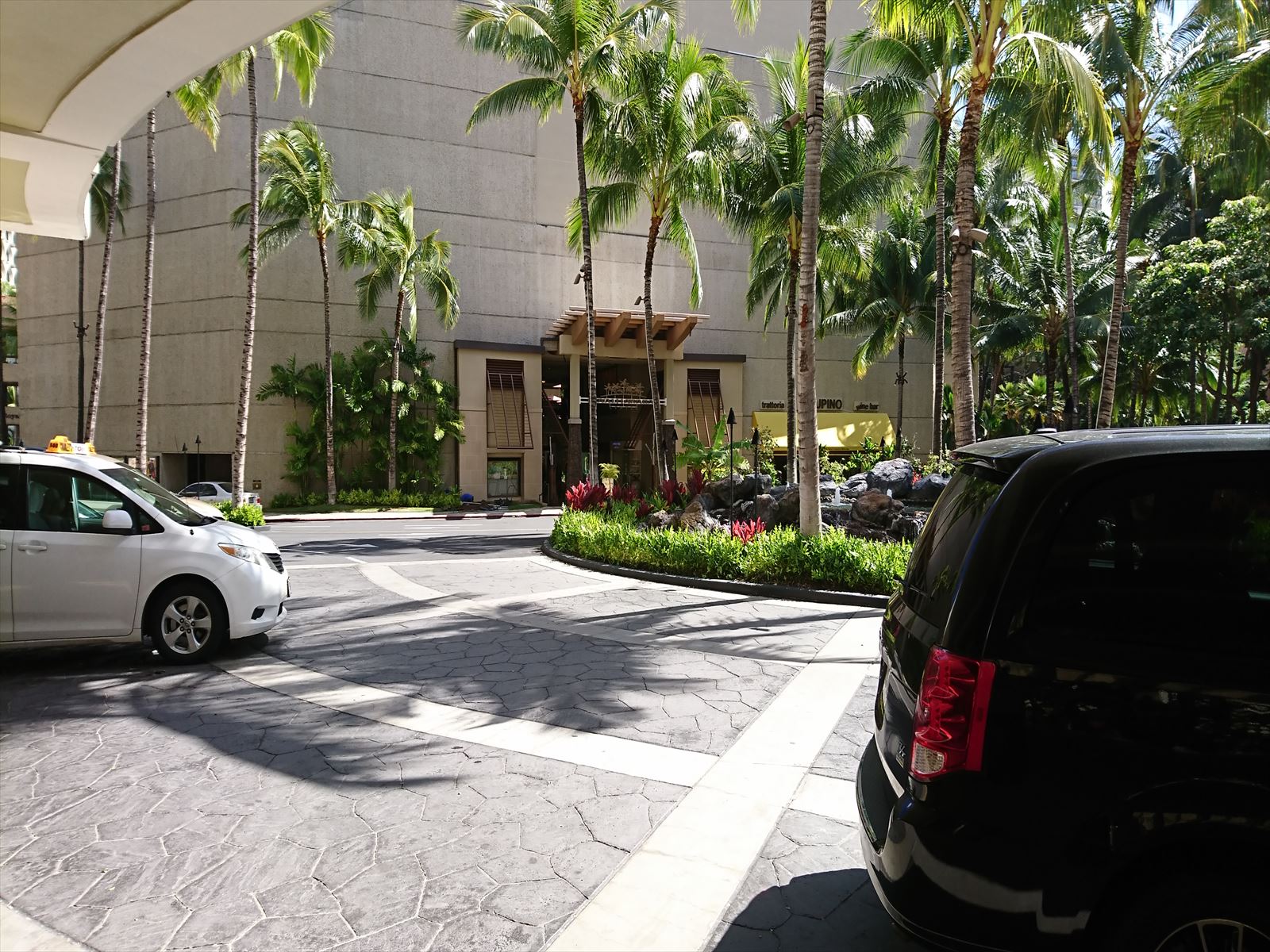リスク対応策 2021.01.22
RM56 「沈黙の駿河湾(静岡新聞社編)」”Suruga Bay in Silence” (Edited by The Shizuoka Shimbun)
目次
For those who prefer to read this column in English, the Japanese text is followed by a British English translation, so please scroll down to the bottom of the Japanese text.
昨年、暮れも押し詰まった12月21日、青森県、岩手県東方沖で大きな地震が起きた。マグニチュード6.3であった。政府は同日、首相官邸の危機管理センターに情報連絡室を設置した。気象庁は、「2011年3月に東日本大震災を引き起こした巨大地震の余震とみられる」と報道した。震源の深さが約10kmと震源が浅い点に、筆者は嫌な気持ちになった。プレートの浅い部分が砕けることで大きな地震が誘発されるからである。

1.静岡新聞社
新聞は、一般的には、全国紙と言われる5紙(読売新聞、朝日新聞、毎日新聞、日本経済新聞、産経新聞)、ブロック3紙(北海道新聞、中日新聞、西日本新聞)、県紙と言われる一府県の全域にわたる新聞、この3種類に分類される。
県紙とは、太平洋戦争下、「一県一紙」統制によって、多数の新聞が統合されその県の唯一の地元紙として成立した新聞のことを指している。この県紙で、最大部数50万部を超える新聞社が、姉妹会社に静岡放送(SBS : Shizuoka Broadcasting System Co., Ltd.)を持つ、静岡新聞社(The Shizuoka Shimbun)であり、配布地域は、静岡県及び静岡県と隣接した愛知県豊橋市である。また、この地域は、南海トラフ地震が起きた際には大きな影響を予想されている地域でもある。
「一県一紙」統制によって、1941年「静岡民友新聞」、「静岡新報」、「浜松新聞」、「沼津合同新聞」、「清水新聞」、「熱海毎日新聞」の静岡県に当時存在した6紙が合併して誕生、「静岡=お茶」のため、その夕刊には毎日掲載される「茶況」欄を持ち、茶の相場取材を担当する専門記者がいる新聞社である。
高度経済成長期、またその後も多くの日本企業は海外進出したが、その例外となる業種があった、新聞社である。2015年11月日本経済新聞社が英国フィナンシャル・タイムズ(FT)を買収するまで、海外進出を果たした唯一の新聞社が静岡新聞社である。米国ハワイ州に、ハワイを中心に週6日間、日英両言語による新聞を発行している新聞社、「ハワイ報知社」を有している。
その静岡新聞社が、昨年2020年8月13日発表した「イノベーション・レポート」は、日本全国の新聞社から大きな注目を浴びている。
このレポートは、米国「ニューヨーク・タイムズ」の社員有志10名が2014年に発表したレポートに由来しているものである。「なぜ、ニューヨーク・タイムズの業績が伸びていないのか」ということを徹底取材、その原因を「紙媒体、紙の新聞を発行することに固執している」と結論づけたものであり、結果として、ニューヨーク・タイムズのDX(デジタル化)を進展させる大きな起爆剤になったのものである。そして、現在、ニューヨーク・タイムズは400万人を超える電子有料版の購読者数を有し、2020年度第2四半期の決算では、デジタルからの収入が紙の収入を上回ったのである。
しかし、静岡新聞社のイノベーション・レポートはニューヨーク・タイムズのそれとは大きく異なっている。
「紙かデジタルか」という話をするつもりはありません。私たちは「デジタルファースト」になるのではない。「ユーザーファースト」になるのです。
とあるからである。このユーザーファーストの原点が、同社の「創業者」である大石光之助氏である。

2.大石光之助氏とハワイ報知社
ハワイ報知社の公式WEBサイトには自社の紹介として以下の記述がある。
ハワイ報知は、ハワイで発行されている唯一の日本語日刊新聞です。1912年12月に故牧野金三郎氏によって創刊されました。日系移民の人権擁護と人種の垣根を越えた平和をめざして言論活動を展開し、ハワイにおける日系移民の歴史とともに歩んできました。
ハワイの日本語新聞は、日系3世や4世の時代となると共に、次々に廃刊される苦難の時代を迎えました。ハワイ報知は1960年代から静岡新聞社の当時の社長、故大石光之助氏の援助を受けて存続し、日本国外では最も歴史のある日本語日刊新聞の一つとなりました。
大石光之助氏は、静岡市に生まれ、上京して著名なジャーナリストであった徳富蘇峰の書生になり、その薫陶を受け、大学を卒業すると、徳富蘇峰の「国民新聞」に入社、その後1年半以上新聞調査及び経営研修のため欧米に派遣された。合併前の「静岡民友新聞」から経営改善の依頼を受けた徳富蘇峰は、同氏を「静岡民友新聞」に送り、当時発行部数3000部の弱小地方紙に過ぎなかった同社を「売るために作る新聞」をモットーに、徹底して「読者本位の紙面」に編集方針を変え、また徹底した合理性と能率性、このような経営理念のもとに社業の進展を図り、全国1,2を競う地方紙に育て上げた人物である。上述の「『紙かデジタルか』という話をするつもりはありません。私たちは『デジタルファースト』になるのではない。『ユーザーファースト』になるのです」という原点が、創業者の「読者本位の紙面」という理念にあることが理解できる。
長い海外派遣生活で培った創業者の知見があったからこそ、全国紙でも成し遂げることができなかった海外進出を1961年米国ハワイ州の日系紙、ハワイ報知社を傘下に収めることによって成し遂げることができたのではないかと考えている。
そのような創業者の存在があるため、「イノベーション・レポート」といい、「ハワイ報知社」といい、静岡新聞社は、地方紙の枠を大きく超えた独自性を強く発揮する新聞社として知られている。静岡新聞社の本社ビル(新聞放送会館)は、著名な建築家丹下健三が設計、ユニークな形をした東京支社ビルも丹下健三が設計した。そういう類い希な独自性を発揮できる新聞社だからこそ、発刊できた出版物に同社編集の「沈黙の駿河湾」がある。
3.「沈黙の駿河湾(静岡新聞社編)」
静岡新聞社の公式WEBサイトには、この「沈黙の駿河湾」に関して以下の記述がある。
静岡新聞社の大震法取材班が2016年1月~2017年11月にかけて展開した長期キャンペーン報道「沈黙の駿河湾 東海地震説40年」を書籍化。40年前に提唱された東海地震説と、予知を前提とした大規模地震対策特別措置法(大震法)に困惑する現場の姿を追った。混乱を招きかねない「警戒宣言」時の対応、東海地震だけを想定した監視態勢など、多くの課題を指摘した。
結果的に政府は警戒宣言を凍結し、南海トラフ地震を視野に入れた抜本的見直しを打ち出した。本キャンペーンを含む約40年にわたる静岡新聞社の防災報道は17年の日本災害情報学会の「廣井賞」を受賞。取材班が現行制度に異を唱え、国レベルの抜本的見直しにつなげた軌跡である。
新型コロナのパンデミックによって「不測の事態」を経験している日本が、宿命的に有する更に巨大なリスクが地震リスクである。南海トラフ巨大地震への関心が高まっている今、改めて防災について考えさせられる一書である。

4.南海トラフ巨大地震
地震の本格的な記録、観測、予知等の歴史は100年あまり、その土地の成り立ちや古来の地震のデータが、今後の地震予知にとって重要であることは、誰しも認めることであろう。筆者は、本コラム「RM(リスクマネジメント) 19-『桜えびの不漁』が意味するもの」で、以下のように記した。
本コラムの「CA(キャプティブ)7-地震保険制度」でも触れたが、平安時代に編纂された歴史書、「日本三代実録」には、現在の神奈川県、東京都、埼玉県などで大地震があり、「圧死者は数え切れないほどだった」などと記載されている。貞観(じょうがん)地震である。特筆すべきは、この大地震の後さらに2つの大地震が起きていたことである。
・869年:貞観(じょうがん)地震
・878年:元慶(がんぎょう)地震
・887年:仁和(にんな)地震
「貞観地震」は、東北の太平洋沖合で起きたマグニチュード8を超える巨大地震とされていて、大津波が押し寄せたことなどから、2011年の東日本大震災が、この貞観地震の再来ではないかと言われている。その9年後に起きたのが、当時の相模国、武蔵国(今の関東南部地域)に大きな被害を与えた、関東を震源とする推定マグニチュード7.4以上の「元慶地震」である。
「貞観地震」を2011年の「東日本大震災」と仮定すると、その9年後は、本年2020年にあたることから、令和の「関東大震災」の発生を懸念する声もある。
さらに、この「元慶地震」の9年後、南海トラフを震域とする推定マグニチュード8.6と言われる巨大震災、「仁和地震」が起きたのである。
「温故知新」とは言い古された言葉であるが、「満足な予知ができない事象」に対してはこれほど重要な言葉はないであろう。古来起きた事象を知り、今後起こる可能性のあることを予測してその事態に備える。この言葉こそ「地震リスクマネジメント」の本質そのものを示しているのではないだろうか。
今回のまとめ
新型コロナの世界的感染拡大(パンデミック)の流れはなかなか止まらない。ワクチンの接種が始まったという朗報にも「副作用」という続報も付いてくる。世界が、日本が、「リスク=新型コロナ」という単視眼で、リスクを捉えているが、日本にとっては新型コロナのリスクより遙かに強大で甚大な被害を与える可能性のあるリスク、地震リスク、なかんずく南海トラフ巨大地震リスクが存在する。新型コロナだけをみるのではなく、このことを再認識して、その備えをしなければならないのではないだろうか。
以前、本コラムに、過去の「地震と疫病がシンクロナイズして起きること」を聖武天皇による743年から752年にかけての奈良の大仏建立の例を引いて記した。「眼前にあるリスク」にのみ囚われるのではなく、「今は静かな南海トラフ巨大地震」への備えを本格的に始める時ではないだろうか。そのためには、様々な点からキャプティブの設立を視野に入れた本格的なリスクマネジメントが必要であると考える。
昨年1月29日、グローバル・リンクのホームページ ( Web サイト)をリニューアル・アップロードして、本コラム記事を書き始めて、本号で100号を迎えることになり、「100号を記念すべき内容に」と「経営コンサルタント」を長年生業としていた立場から、「取り上げるべき企業」を種々調査した結果、リスクマネジメントに関して非常に先進的な取り組みをされていると考えられる静岡新聞社を取り上げさせていただいた次第である。
単に学問的な立場からのみ東海地震、南海トラフ地震等を描くことなく、「巨大地震への備え」を、企業が、組織が、包括的に進めていくべきリスクマネジメントに関して、詳細かつ解りやすく纏めた「沈黙の駿河湾」(静岡新聞社編)は、リスクマネジメントに大いに資する秀逸な一書であるので、是非手に取ってご覧になることをお勧めしたい。
執筆・翻訳者:羽谷 信一郎
English Translation
Risk Management 56ー “Suruga Bay in Silence” (Edited by The Shizuoka Shimbun)
Last year, on the 21st of December, in the closing days of the year, a major earthquake struck off the east coast of Aomori and Iwate prefectures. The magnitude of the earthquake was 6.3. On the same day, the government set up an Information Liaison Office at the Crisis Management Centre in the Prime Minister’s Office.
The Japan Meteorological Agency reported that the quake was “believed to be an aftershock of the massive earthquake that triggered the Great East Japan Earthquake in March 2011”.
The author was disgusted by the shallow nature of the epicentre, which was about 10km deep. This is because large earthquakes are triggered when the shallow part of the plate breaks up.
1. The Shizuoka Shimbun
Newspapers are generally classified into three categories: five national newspapers (Yomiuri, Asahi, Mainichi, Nihon Keizai and Sankei), three block newspapers (Hokkaido, Chunichi and Nishinippon) and prefectural newspapers, which cover the whole area of a prefecture.
The prefectural newspapers were established during the Pacific War under the “one prefecture, one newspaper” system, when a number of newspapers were combined to form the only local newspaper in a prefecture.The largest newspaper, with a circulation of over 500,000, is The Shizuoka Shimbun, which has a sister company, Shizuoka Broadcasting System Co. The distribution area is Shizuoka Prefecture and Toyohashi City, Aichi Prefecture, which is adjacent to Shizuoka Prefecture.This area is expected to be severely affected in the event of a Nankai Trough earthquake.
The newspaper was established in 1941 as a result of the “one prefecture, one newspaper” policy by merging the six newspapers that existed in Shizuoka Prefecture at the time: the Shizuoka Minyu Shimbun, the Shizuoka Shimpo, the Hamamatsu Shimbun, the Numazu Godo Shimbun, the Shimizu Shimbun and the Atami Mainichi Shimbun.
During the high economic growth period and afterwards many Japanese companies expanded overseas, but there was one industry that was an exception, the newspaper industry, and until November 2015, when the Nihon Keizai Shimbun acquired the Financial Times (FT) in the UK, the Shizuoka Shimbun was the only newspaper company to expand overseas. It has its own newspaper in Hawaii, “Hawaii Hochi”, which publishes a bilingual newspaper in English and Japanese six days a week, mainly in Hawaii.
The “Innovation Report” released by the Shizuoka Shimbun last August 13, 2020 has attracted a great deal of attention from newspapers all over Japan.
This report is based on a report published in 2014 by 10 volunteer employees of the New York Times in the United States. The report was based on an in-depth investigation into why the New York Times was not performing well, and concluded that the reason was the paper’s obsession with publishing newspapers. Today, the New York Times has over 4 million electronic subscribers and in the second quarter of 2020, digital revenues exceeded print revenues.
However, the Shizuoka Shimbun’s innovation report differs significantly from that of the New York Times.
“We are not going to talk about ‘paper or digital’. We’re not going to be ‘digital first’, we’re going to be ‘user first’”.
The origin of this user-first approach is the company’s “founder”, Mr. Kounosuke Oishi.
2. Mr. Konosuke Oishi and Hawaii Hochi
On the official website of Hawaii Hochi, there is a description of the company as follows:
Hawaii Hochi is the only Japanese language daily newspaper published in Hawaii.It was founded in December 1912 by the late Kinzaburo Makino, and was dedicated to advocating for the human rights of Japanese immigrants and for peace across racial lines. It has been a part of the history of Japanese immigrants in Hawaii.
Japanese language newspapers in Hawaii went through a period of hardship as the third and fourth generations of Japanese immigrants began to leave the paper. Hawaii Hochi has been around since the 1960’s with the help of the late Mr. Konosuke Oishi, then President of the Shizuoka Shimbun, and has become one of the oldest Japanese language daily newspapers outside of Japan.
Mr. Konosuke Oishi was born in Shizuoka City and moved to Tokyo to become a student of The famous journalist Soho Tokutomi. After graduating from university, he joined Soho Tokutomi’s “Kokumin Shimbun” and was then sent to Europe and America for over a year and a half for newspaper research and management training.
Soho Tokutomi, who had been asked by the pre-merger Shizuoka Minyu Shimbun to improve the company’s management, sent him to the Shizuoka Minyu Shimbun. He was the person who changed the editorial policy of the company, which at that time was only a weak local newspaper with a circulation of 3,000, to a “reader-oriented newspaper” under the motto of “making newspapers to sell”, and developed the company’s business based on a management philosophy of thorough rationality and efficiency, and built it up to become the top local newspaper in Japan. The above mentioned “We are not going to talk about ‘paper or digital’. We’re not going to be ‘digital first’, we’re going to be ‘user first’.” It is clear that the founder’s philosophy of a “reader-focused newspaper” is at the heart of the company.
We believe that it was the founder’s knowledge, cultivated during his long years of overseas assignment, that enabled them to expand overseas, something that even the national newspapers could not achieve, by acquiring Hawaii Hochi, a Japanese-affiliated newspaper in Hawaii, in 1961.
Because of the presence of such a founder, the Shizuoka Shimbun is known as a newspaper that strongly demonstrates its originality, which goes far beyond the boundaries of a local newspaper, as is evident in the existence of the “Innovation Report” and the “Hawaii Hochi”. The Shizuoka Shimbun’s head office building (Shimbun Hōsō Kaikan) was designed by the famous architect Kenzo Tange and the uniquely shaped Tokyo branch building was also designed by Kenzo Tange. It is precisely because the newspaper is able to display such a rare originality that it was able to publish the publication “Suruga Bay in Silence” edited by the company.
3.’ “Suruga Bay in Silence” edited by the Shizuoka Shimbun’
On the official website of the Shizuoka Shimbun, there is the following description of “Suruga Bay in Silence”.
The book is based on the long-term campaign report “Suruga Bay of Silence: 40 years of the Tokai earthquake theory”, which was developed by the Shizuoka Shimbun’s “the Daishin Law” (The Act on Special Measures against Large-Scale Earthquakes) reporting team from January 2016 to November 2017.
The book follows the Tokai earthquake theory proposed 40 years ago, and the confusion in the field over the Act on Special Measures against Large-Scale Earthquakes (the Daishin Law), which is based on the premise of prediction. We pointed out a number of issues, including the response at the time of the “warning declaration”, which could lead to confusion, and the monitoring system assuming only the Tokai earthquake.
As a result, the government froze the warning declaration and launched a fundamental review with a view to the Nankai Trough earthquake. The Shizuoka Shimbun’s disaster prevention reporting over the past 40 years, including this campaign, won the “Hiroi Prize” of the Japan Society for Disaster Information in 2017. This is the story of how a news team challenged the current system and led to a fundamental review at the national level.
Japan is already experiencing “unforeseen circumstances” due to the new corona (covid-19) pandemic, but the country faces an even greater risk: earthquake risk. This is a book that will make you think again about disaster prevention at a time when there is growing concern about a major earthquake in the Nankai Trough.
4. Nankai Trough Mega Earthquake
The history of full-scale recording, observation and prediction of earthquakes is a little over 100 years old, and we can all agree that local origins and ancient earthquake data are important for future earthquake prediction. In this column, “RM (Risk Management) 19 – What the ‘poor catch of sakura shrimp’ means”, I wrote the following in this column:
As mentioned in this column’s “CA (Captive) 7 – Earthquake Insurance System”, the historical book “Nihon San-dai Jitsu-roku”, compiled in the Heian period (794-1185), mentions that there were major earthquakes in present-day Kanagawa, Tokyo and Saitama prefectures, and that “the number of crushing deaths was uncountable”.This was the Jogan Earthquake.It is worth noting that two more major earthquakes occurred after this one.
In 869: Jogan Earthquake
In 878: Gangyou earthquake
In 887: Ninna Earthquake.
It is believed that the 2011 Great East Japan Earthquake was a repeat of the Jogan Earthquake, which was a massive earthquake with a magnitude of over 8 that struck off the Pacific coast of Tohoku and triggered a massive tsunami. Nine years later was the Gangyo Earthquake, which was estimated to have had a magnitude of over 7.4 and caused major damage in the Sagami and Musashi provinces (the southern part of what is now the Kanto region).
If we assume that the Jogan Earthquake was the Great East Japan Earthquake of 2011, then nine years later, in around 2020, some people are concerned about the occurrence of the Great Kanto Earthquake in 2020.
Furthermore, nine years after the Gengyo earthquake, the Ninna earthquake, a huge earthquake with an estimated magnitude of 8.6, occurred in the Nankai Trough.
The phrase “learning from the past” is an old one, but it is perhaps the most important one when it comes to events that cannot be predicted satisfactorily. Knowing what has happened in the past, anticipating what may happen in the future and preparing for it. This is the essence of “earthquake risk management”.
Summary of this issue
The global pandemic of the new corona (covid-19) is not going to stop. The good news is that vaccination has started, but it is followed by reports of “side effects”. However, for Japan, there is a risk of earthquake, especially a huge earthquake in the Nankai Trough, which is far more powerful and potentially devastating than the risk of the new corona(covid-19). We should not only look at the new corona(covid-19), but we should also be aware of this and be prepared for it.
In this column I have written about the synchronisation of earthquakes and epidemics in the past, citing the example of the construction of the Great Buddha in Nara by Emperor Shomu between 743 and 752. It is time to start preparing for the “now silent Nankai Trough earthquake” in earnest rather than being preoccupied only with the “immediate risks”. For this purpose, we believe that full-scale risk management is necessary, with a view to establishing a captive in many respects.
On the 29th of January last year, we renewed and uploaded the website of Global Link and and we began writing this column, which will be our 100th issue. In order to make this 100th issue a memorable one, I did a lot of research to find the best companies to cover, as I have been a management consultant for many years. As a result, We have chosen to focus on the Shizuoka Shimbun as it is considered to be taking a very progressive approach to risk management.
We would like to recommend you to read “Suruga Bay in Silence” (edited by the Shizuoka Shimbun), which is an excellent book that contributes greatly to risk management, not only from an academic point of view, but also because it is a detailed and easy-to-understand book on risk management that companies and organisations should comprehensively promote in order to be prepared for huge earthquakes.
Author/translator: Shinichiro Hatani

